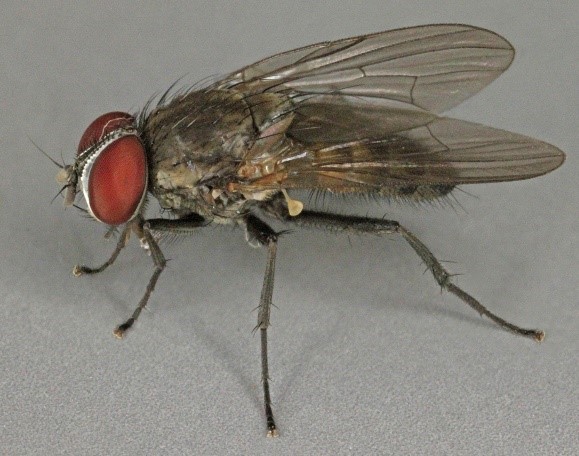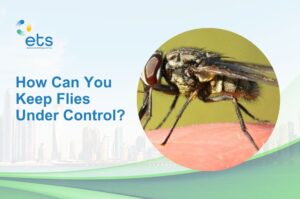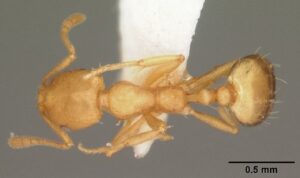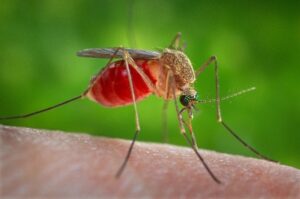Little House Fly:
General Description
|
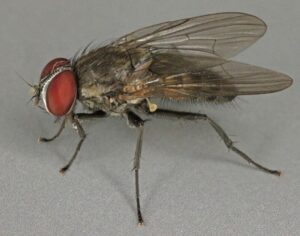
Credit: Janet Graham |
- The brown-grey thorax has three black, longitudinal stripes in the males.
- The eggs are white with a pair of dorsal longitudinal flanges or wings.
- The larvae are flattened, spiny, and about 7 mm long when fully grown.
Life Cycle and Common Characteristics
- These flies usually appear in the early spring before house flies become numerous.
- It is best known for its habit of entering buildings and flying in jagged patterns in the middle of a room.
- Females lay their eggs in batches of up to 50 (lay up to 2,000 eggs altogether).
- Eggs are laid on decaying vegetable matter and excrement, particularly that of chickens, humans, horses, and Eggs can float in liquid and semiliquid decaying organic matter.
- Eggs hatch within 1 to 2 days.
- Larvae feed on all manner of decaying organic matter, including carrion.
- Larvae require at least 6 days to reach pupation.
- Pupation lasts for at least 7 days.
- The pupal period lasts about seven days under favorable conditions.
- The complete life cycle requires 15 to 30 days, depending upon temperature.
- These flies have about seven generations per year.
- They are often found on excrement and on vertebrate animals. Because of their movements between excrement and human food, they are considered disease carriers.
Damages and Medical Implications
- From May to October, these flies come frequently into buildings and are noticeable around lamps. During night hours, the flies sit on lamps or on walls and leave their small excrement marks.

